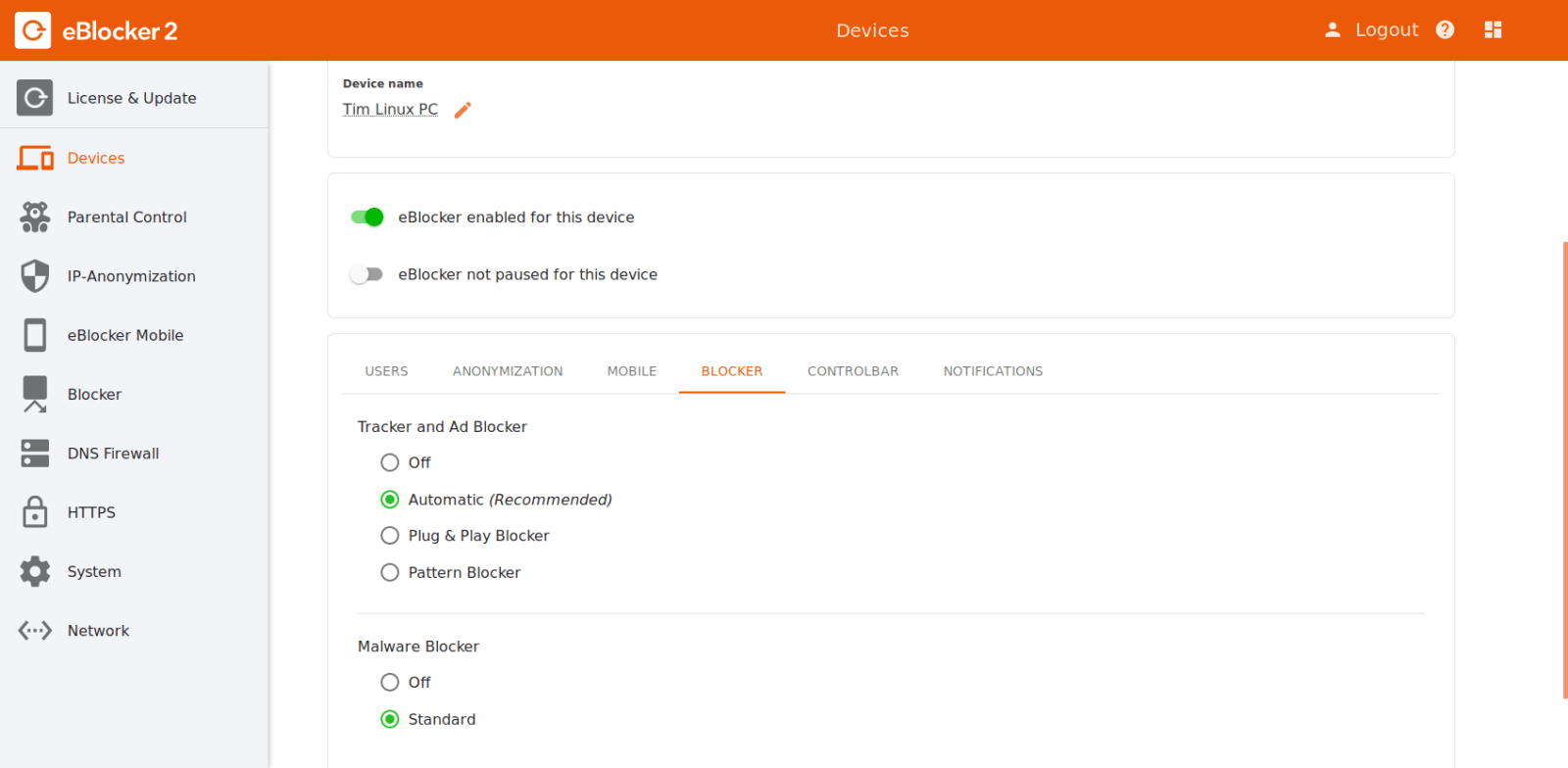Types of Blockers #
Starting with version 2.5 of eBlocker we provide:
- the Domain Blocker / Plug & Play Blocker (the DNS Firewall) – blocks full domains only (ie. badtracker.com)
- the Pattern Blocker – blocks URLs (ie. gooddomain.com/badtracker.php)
- the Malware Blocker (blocks Malware)
In the eBlocker settings for each device you can select which Blocker method you want to use. Additionally you can also select whether the Malware & Phishing Blockers are activated, or not, on a per device basis. Below we describe the different Blocker methods in more detail. To review the current Blocker methods visit the menu: “eBlocker Settings > Blocker”
Note: We recommend setting “Automatic” for the Blocker method. The eBlocker can then automatically decide which Blocker methods should be used for this device. It will then chose “Pattern Blocker” for HTTPS enabled devices and “Domain Blocker” in case eBlocker HTTPS is disabled for the device.

When eBlocker is enabled for a new device, “Automatic” is selected by default. This can be changed by “eBlocker Settings > Devices > Device” and selecting the “Blocker” tab.
Domain Blocker (Plug & Play) – the DNS Firewall #
With this blocker mode, the eBlocker blocks trackers and tracking ads based on domain queries. This means that the eBlocker is blocking the device, or the browser, from reaching a specific domain. It does not matter whether the domain can be reached via HTTP or HTTPS protocol.
This block method is very popular since it blocks trackers and tracking advertisements.
Pros:
- Does not require the activation of the eBlocker HTTPS function.
- Works for all devices in network.
- Also protects IoT devices against access to trackers.
Cons:
- Blocks only based on domains. All URLs of a domain will be blocked.
Pattern Blocker #
With this blocking mode the eBlocker blocks trackers and tracking advertisements based on patterns of URLs (not just domains). In order for the eBlocker to analyze the URLs, eBlocker’s HTTPS function must be activated and the eBlocker certificate must be installed for the device. Example: With a pattern like *badtracker* all URLs containing “badtracker” will be blocked regardless of the domain and URL path. So the URL will be blocked: “gooddomain.com/somepath/this-is-a-verybadtracker-url/execute-tracker.php” whereas all other URLs (not containing “badtracker”) will pass.
Pro:
- Very precise filtering of trackers and tracking advertisements based on URLs.
Cons:
- Only works if the eBlocker HTTPS function has been activated and the eBlocker certificate has been installed on the device.
- Not all devices can be protected, because some devices do not support a certificate installation (like a SmartTV for example).
Malware & Phishing Blocker #
The term Malware refers to computer programs that have been developed to perform unwanted and possibly harmful functions. The term Phishing refers to an attempt to access the personal data of an Internet user via fake websites for example.
eBlocker’s Malware & Phishing Blocker will prevent accessing websites known for Malware and Phishing, if enabled for a device.